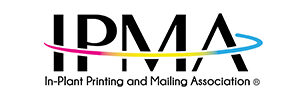I ran the 2018/2019 IPMA In-plant Health Self-assessment program for IPMA, which indicated that many in-plants do not have up-to-date and relevant strategic plans. There are several reasons for this, but most of the ones I hear are bogus, and it is time to bust them. Here are some of the more common ones:
1. Strategic plans are worthless executive management exercises
You can set up anything to be a mindless exercise, but strategic planning doesn’t have to be one. These contain the goals of where you want your in-plant to be in five years, along with the measurable objectives you’ll need to achieve for that to happen. And, they contain the investments and activities you’ll need to perform to hit those objectives. An effective strategic plan includes far more goals, objectives, and KPIs than industry buzzwords and vague mission statements. It is a working document you and your management will use to grow your operation.
2. Writing them is too much work
Yeah, you’ll need to spend some time working on this, but it isn’t something which should take weeks or months of dedicated time to write. The meat of an effective strategic plan can probably be boiled down to two to five pages total. The rest of it, if there is any, is typically back-up data to support your conclusions. The essential parts are your goals and measurable objectives. Those can be bulleted lists with a paragraph or two to explain each. These do not have to be lengthy research papers.
3. We don’t have the information to create them
Perhaps you don’t have that information now, but you can get it. Your parent organizations and overall institutions all have 5-year plans. Get them. While you’re at it, get your top customers’ and prospects’ strategic plans. Talk to other IPMA members in similar situations about their future directions and how they might apply to you. Most importantly, always remember that you are the document production services experts in your institution. You are the ones best able to determine how to shape your services in the coming years to anticipate and meet the evolving document needs of your clients.
4. They’ll wind up in a desk drawer
No, no, no, and no! Effective strategic plans contain measurable objectives which need to be continuously tracked and annually or semi-annually reviewed. If you have an objective to increase revenues by 20% over five years, you had better be tracking your progress each year and removing any obstacles. Strategic plans are like contracts between you and your institution. Provide this level of funding and support on this schedule, and we’ll deliver these results for the institution. Oh, and updating and extending your plan after an annual review to keep it evergreen is a best practice.
5. We’ve run just fine for years without one
Perhaps you have, but are you missing opportunities to strengthen your position in your institution? Do you satisfy the needs of your clients to the fullest? Are you fully utilized by every department who could benefit from your services? Are you driving the direction of your document production services business or are people who know nothing about it setting your direction? It’s easy to slip into the habit of doing things the way you’ve always done them, but that is a setup for obsolescence and outsourcing.
6. I don’t know how to write an effective strategic plan
Now this one could well be true, and there’s no shame in that. Stay tuned for my next blog where I’ll discuss the contents in an effective strategic plan and some initial steps you can take to create one. In the meantime, you can view the recording of my strategic planning session from this year’s conference in the Members Only Content section on the IPMA website.

Greg Cholmondeley is President of PRINTelligence Consulting, which provides workflow and business enhancement analysis, advice, and recommendations for in-plants and commercial printers. He has been in the production printing industry for over 35 years and written strategic and market attack plans for companies like Xerox, Océ, Ricoh, PODi, and Caslon.
